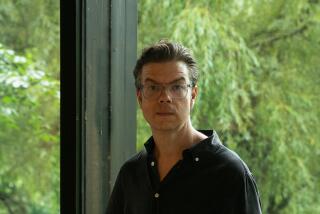Poems We Can Understand
If a monkey drives a car
down a colonnade facing the sea
and the palm trees to the left are tin
we don’t understand it.
We want poems we can understand.
We want a god to lead us,
renaming the flowers and trees,
color-coding the scene,
doing bird calls for guests.
We want poems we can understand,
no sullen drunks making passes
next to an armadillo, no complex nothingness
amounting to a song,
no running in and out of walls
on the dry tongue of a mouse,
no bludgeoness, no girl, no sea that moves
with all deliberate speed, beside itself
and blue as water, inside itself and still,
no lizards on the table becoming absolute hands.
We want poetry we can understand,
the fingerprints on mother’s dress,
pain of martyrs, scientists.
Please, no rabbit taking a rabbit
out of a yellow hat, no tattooed back
facing miles of desert, no wind.
We don’t understand it.
From “Ecstatic Occasions, Expedient Forms: 65 Leading Contemporary Poets Select and Comment on Their Poems,” edited by David Lehman (Macmillan: $19.95; 288 pp.). The title recalls Marianne Moore: “Ecstasy affords the occasion, and expediency determines the form.” Each of the 65 poets in this anthology contributes a poem and a commentary on the form the poem has taken.
In part of his comment on the form of “Poems We Can Understand,” Paul Hoover writes: “I composed by sound, using rhymes when the argument itself, not the line ending, called for them. After the first couple of drafts, I broke the poem into quatrains for the purpose of making a better shape on the page. Once that form was determined, however, I reworked the poem to sharpen each line as sound and as information. The final couplet was chosen for its abruptness; filling out a final quatrain would have spoiled the rhythm. Besides choosing to write an argument, the use of refrain was my only other initial constraint. The polarities (not this, but that) and the anaphora (the reiterated phrases) give a nodding forward movement that drives into the couplet wall at the end.
“The poem marks a period when I was trying to move from a poetry consisting exclusively of imagery--I’d been raised to think that ‘essaying’ in poetry is unacceptable--to a poetry of thought and music.” With permission from Hoover.
More to Read
Sign up for our Book Club newsletter
Get the latest news, events and more from the Los Angeles Times Book Club, and help us get L.A. reading and talking.
You may occasionally receive promotional content from the Los Angeles Times.








